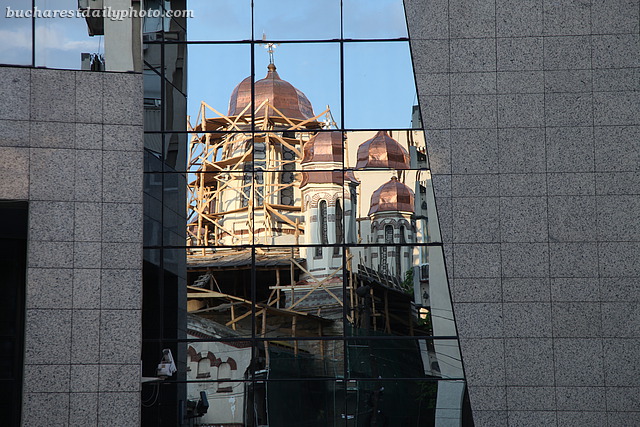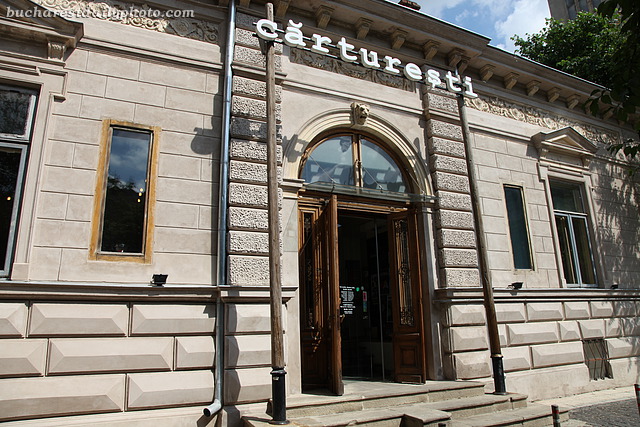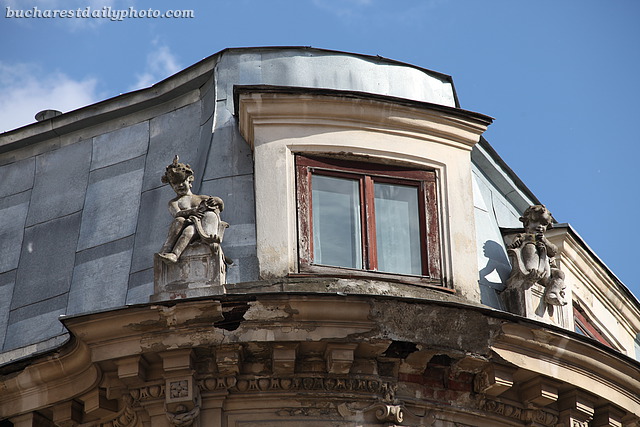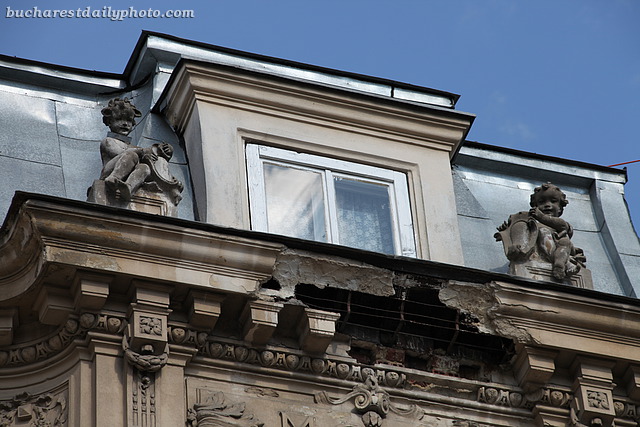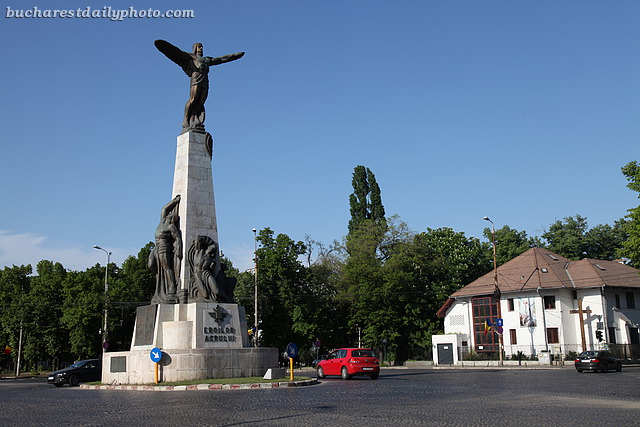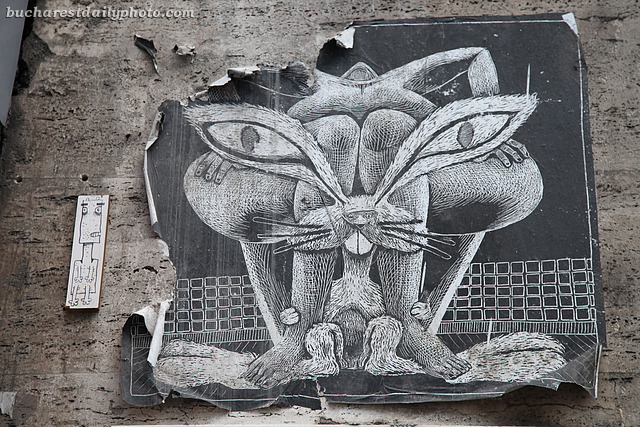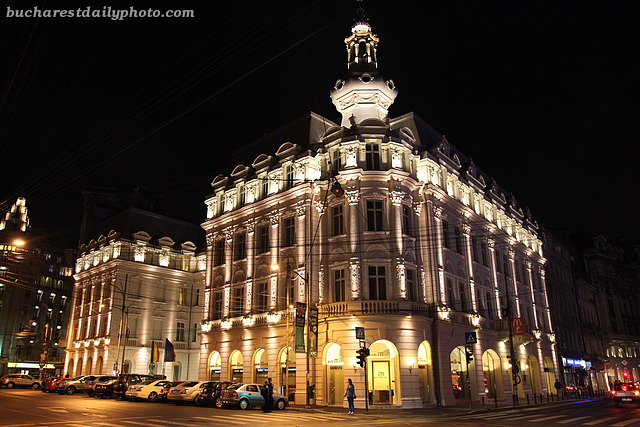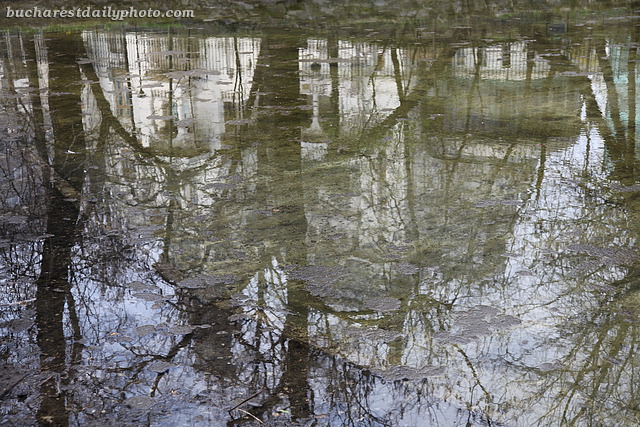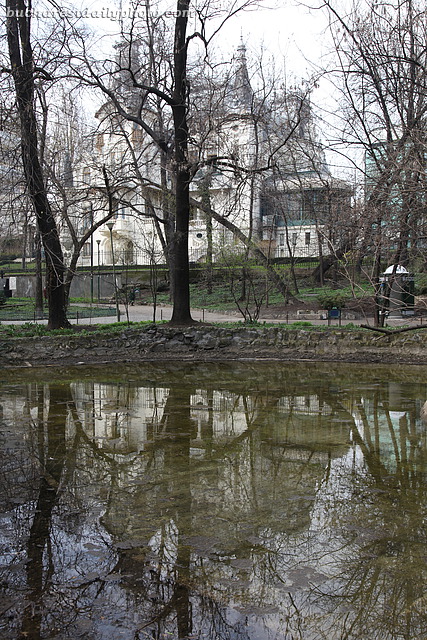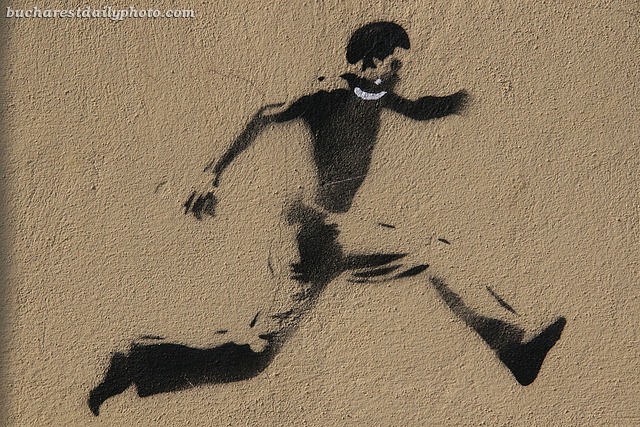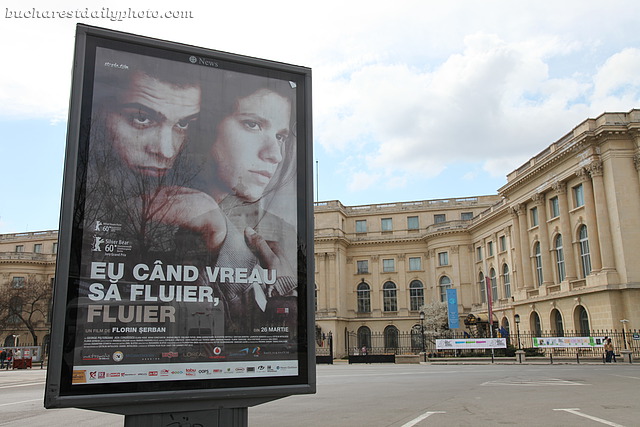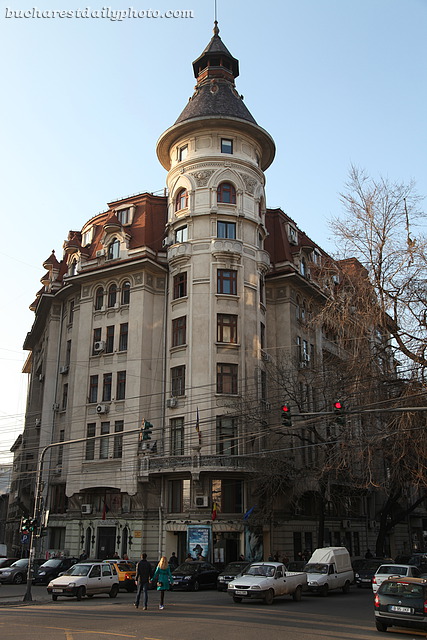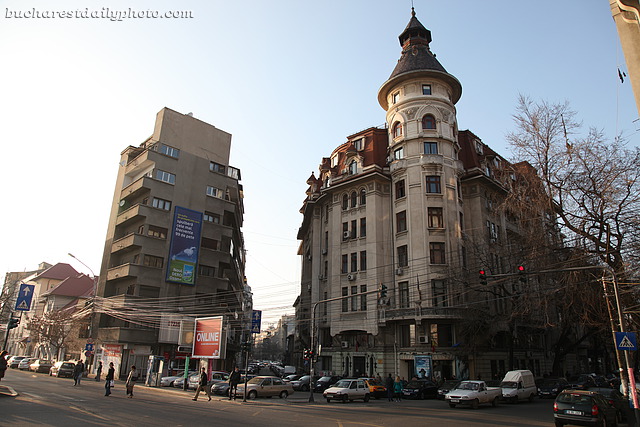Zlătari Church reflected in the glass building called Bucharest Financial Plazza, on Victory Road (Calea Victoriei).
This is my favorite bookstore in my home city of Bucharest. It started with a small shop which opened in 2000 and turned into a chain and a strong cultural brand with many locations in Bucharest and the rest of the country. My favorite location is the one shown in the photo, which is located on Arthur Verona Street, in a beautiful 19th century mansion with high ceilings and big rooms. In my opinion it has the best collection of books in Bucharest, DVDs and CDs and a very nice tea room. It also has a decent collection of English books so if you’re in Bucharest and don’t read Romanian you can still check it out. The house was expanded last year by joining it with an adjacent one and now the selection of books is even better, there’s a cafe in the basement and a garden cafe in the summer. Plenty of cultural events take place here including book launches, concerts, exhibitions and multimedia events.
I wonder if the people living behind those windows sleep better knowing to be guarded by such lovely stone figures.
The monument in today’s photo is dedicated to the Romanian airmen. Its official name is “The Monument of the Heroes of the Air” (Monumentul Eroilor Aerului in Romanian) but it is more commonly known by the people of Bucharest as “The Statue of the Aviators” (Statuia Aviatorilor in Romanian). It lies in the Aviators’ Square, on Aviators’ Boulevard (go figure 🙂 ) and it was built between the years 1930 to 1935 by sculptors Lidia Kotzebue and Iosif Fekete.
I’m pretty sure the little drawing on the left is authored by the Square Cat but I’m not sure who is the author of the big one.
Recently restored and looking better than ever. The hotel was built in 1886 by architects Emil Ritten Forster and I.I. Râşnovanu in German Renaissance style. It replaced another hotel, located on the same spot, Grand Hotel Broft which took its name from one of the former residents, Carol Broft.
Can you spot the palace in the above photo? If not, you’re allowed to peak below as well 🙂
Spotted in the Grădina Icoanei area.
The new Romanian cinema has been one of the unexpected surprises of the last five years. To quote from an article I found on the web “The notion that Romania could emerge as one of the most vibrant and exciting film-making centers in Europe, if not the world, would have seemed far-fetched a decade ago. And yet, in four short years a generation of remarkably talented young Romanian directors have produced an impressive body of films that have consistently landed at the top of international critics’ polls and in the coveted top tier of film festivals from Cannes to New York”. Some call it the “new wave of Romanian cinema”, some dispute the title, but one thing is clear and that is that for the last five years we’ve seen good movies come out of Romania, something that never happened before. Since most of the directors in this new wave are people in their 20s and 30s, there is hope that this trend will continue (although they’ll have to change the formula before it becomes stale). Most of the films are primarily concerned with the social aspects of the Romanian society and culture, with recovering the communist past seen through the eyes of its victims and with life in the new capitalism society. There’s irony, there’s tragedy, the movies are low budget and there are no special effects to speak of; but they’re heartfelt and they move you even though they probably won’t convince you to visit Romania (we have “Cold Mountain” to account for that 🙂 ). Some of the most known titles, which got international release, are: “The Death of Mr. Lăzărescu” (director Cristi Puiu, won Un Certain Regard at Cannes Film Festival), “Four Months, Three Weeks and Two Days” (director Cristian Mungiu, won Palme d’Or at Cannes Film Festival), “12:08 East of Bucharest” (director Corneliu Porumboiu, won Camera d’Or at Cannes Film Festival), “California Dreaming” (director Cristian Nemescu, won Un Certain Regard at Cannes Film Festival), “Police, adjective” (director Corneliu Porumboiu, won Un Certain Regard at Cannes Film Festival), “Tales from the Golden Age” (directors Hanno Höfer, Cristian Mungiu, Constantin Popescu, Ioana Uricaru, Răzvan Mărculescu). The latest movie to win an award, the Silver Berlin Bear. is the one advertised by the poster in today’s photograph. The movie is called ” If I Want to Whistle, I Whistle” directed by Florin Şerban. I didn’t see it yet, so I can’t tell you if I liked it or not, but I plan to see it later this week.
The building in today’s photos houses one of Bucharest oldest theater companies, Bulandra Theater, founded in 1947 and named so after Lucia Sturdza-Bulandra (1873-1961), one of the leading Romanian stage actresses, which also served as the first director of the theater. Bulandra currently has two performance halls; the one in the image is called Izvor Hall. Construction of the building took place between the years 1926 to 1929 after plans by architect Ion Trajanescu and under the guidance of engineer Constantin Cihodaru. It also bears the name of “Palace of the Cultural League”. The facade is a combination of Neoromanian style with Art Deco.
